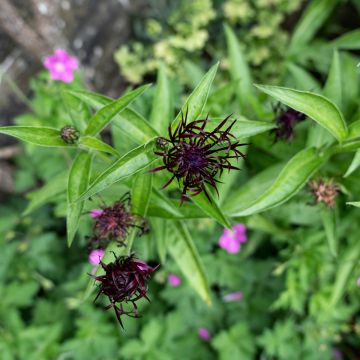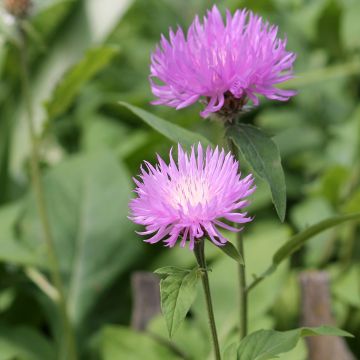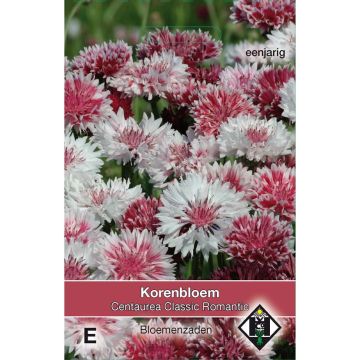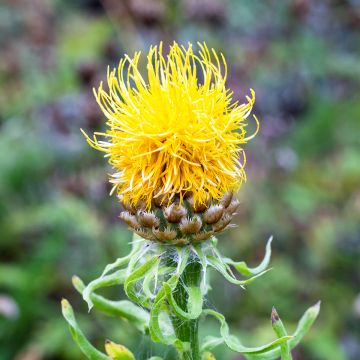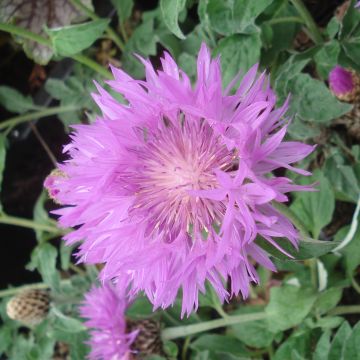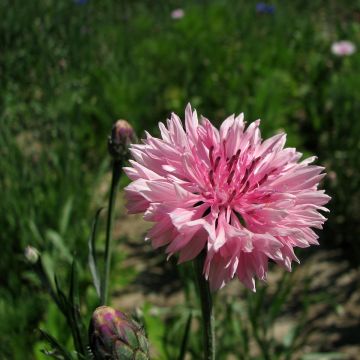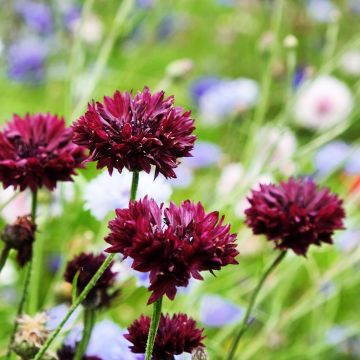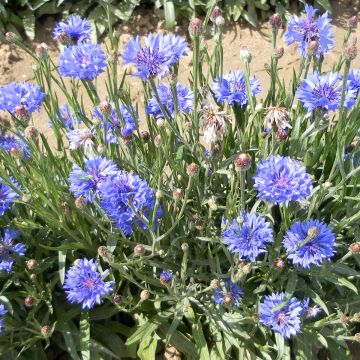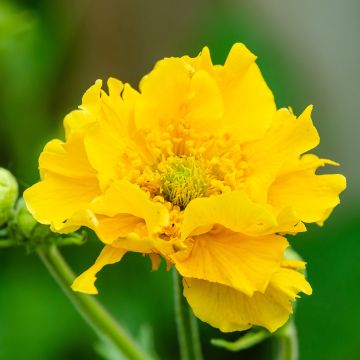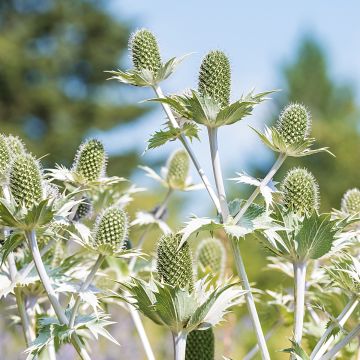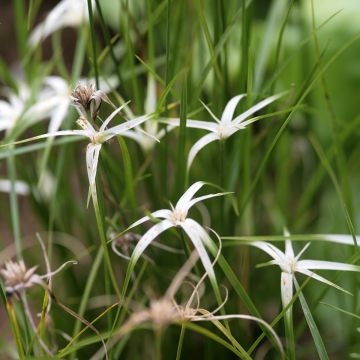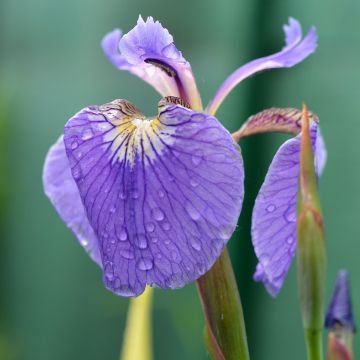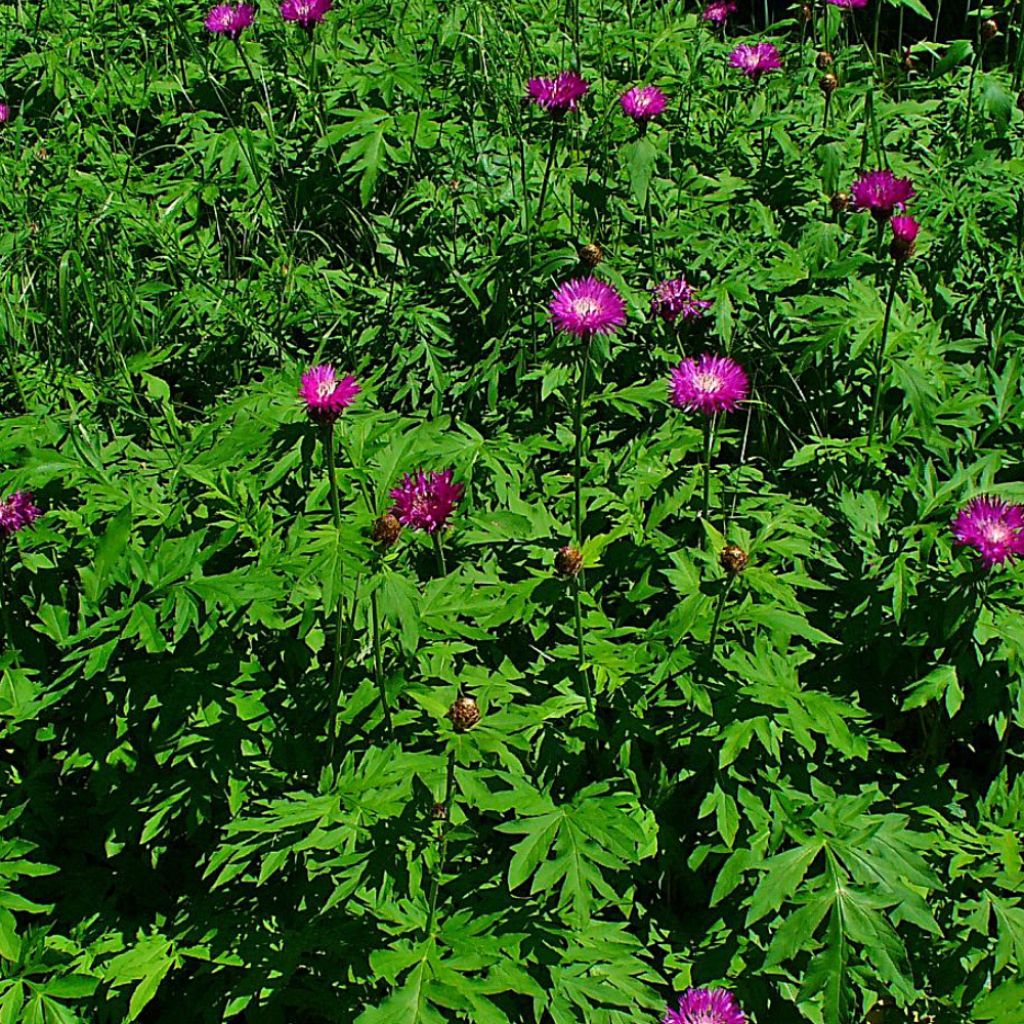

Centaurea dealbata Stenbeergii
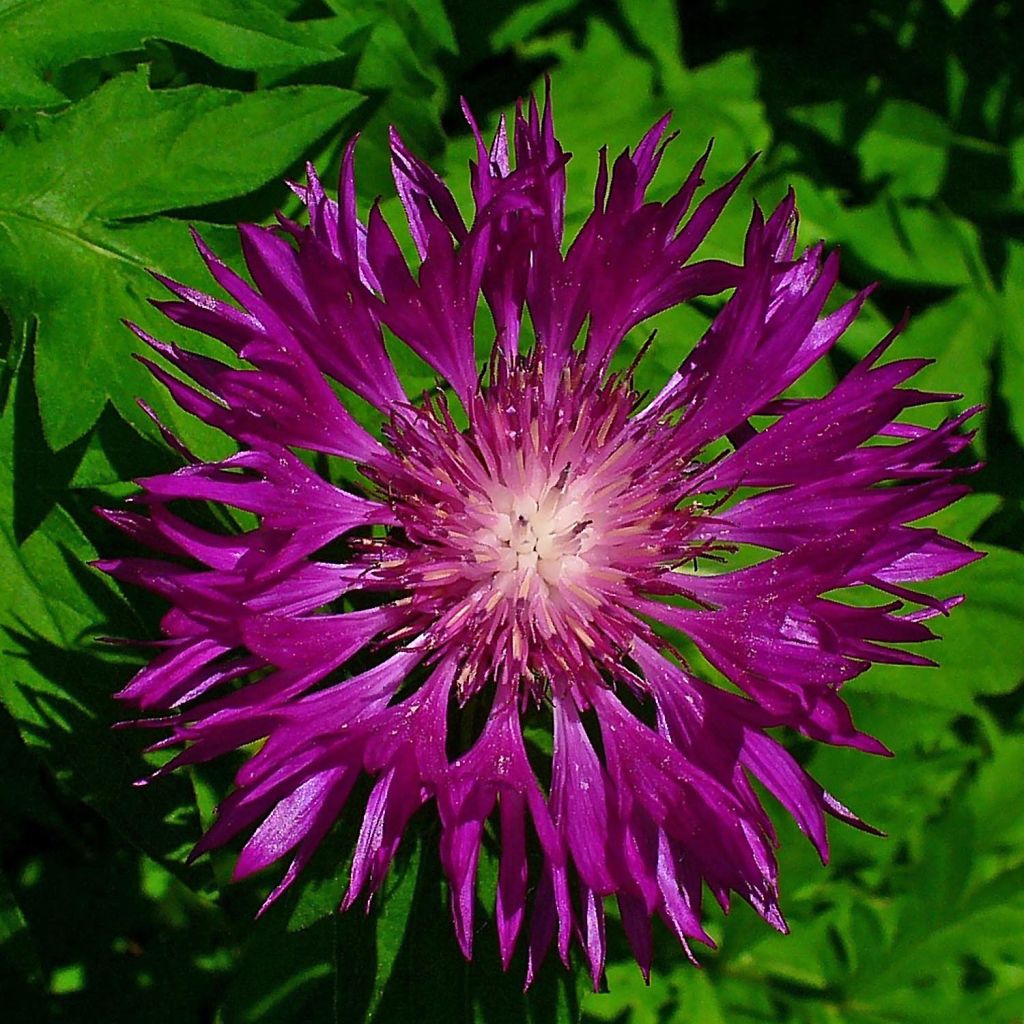

Centaurea dealbata Stenbeergii
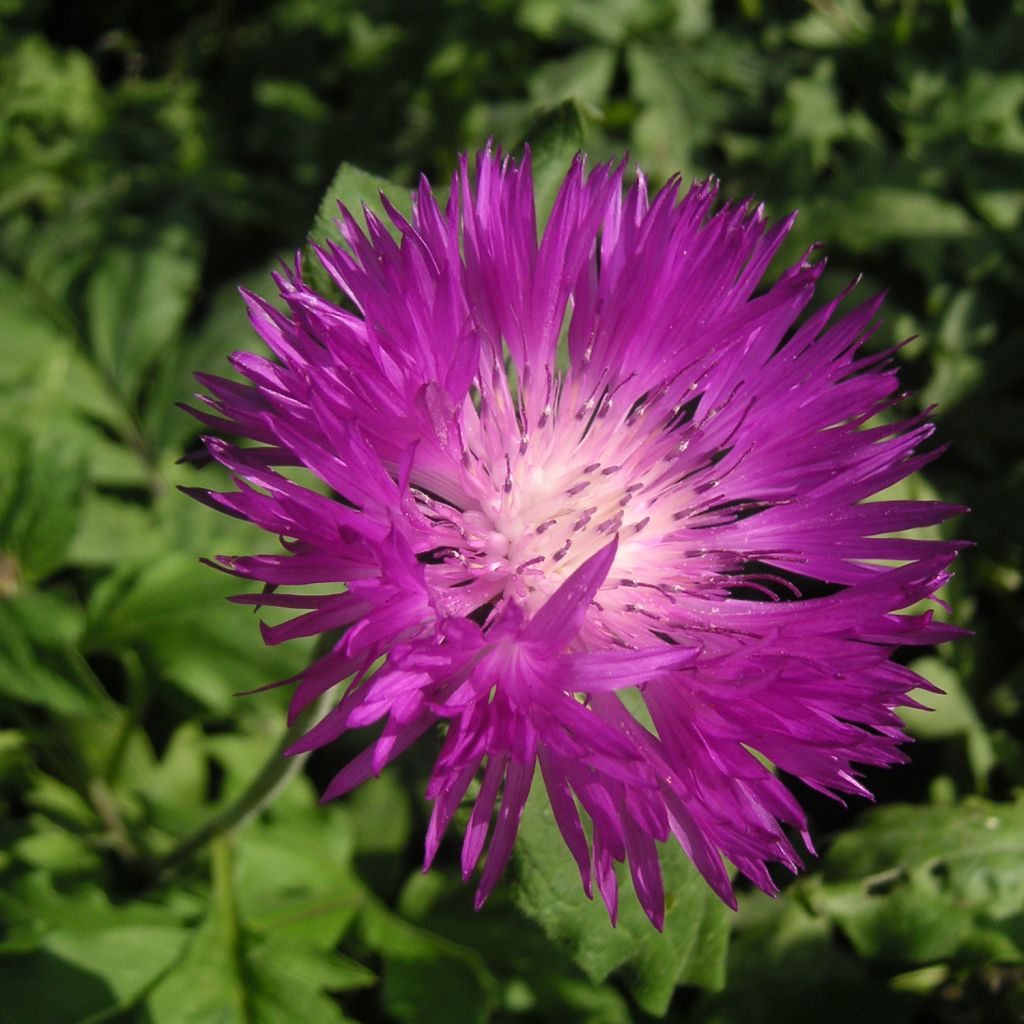

Centaurea dealbata Stenbeergii
Centaurea dealbata Stenbeergii
Centaurea dealbata Stenbeergii
Mealy centaury, Persian cornflower, Whitewash cornflower
This young plant was just waiting to be planted. In a few days, it settled in nicely.
Laurence Allain , 10/09/2022
This item cannot be shipped to the selected country
Delivery charge from €5.90
Delivery charge from €5.90
More information
Schedule delivery date,
and select date in basket
This plant carries a 12 months recovery warranty
More information
We guarantee the quality of our plants for a full growing cycle, and will replace at our expense any plant that fails to recover under normal climatic and planting conditions.
From €5.90 for pickup delivery and €6.90 for home delivery
Express home delivery from €8.90.
From €5.90 for pickup delivery and €6.90 for home delivery
Express home delivery from €8.90.

Does this plant fit my garden?
Set up your Plantfit profile →
Description
Centaurea dealbata 'Steenbergii', also known as Persian Cornflower, is a taller version of the cornflower, with bright magenta pink petals highlighted with white. It is a hardy and highly adaptable perennial that has retained the charm of wild plants. Growing quickly and flowering from the first year, it thrives in sunny locations, making it a vibrant and generous plant. It is irreplaceable in natural flower beds and slightly wild areas of the garden.
The 'Steenbergii' Centaurea belongs to the Asteraceae family and is native to the Caucasus and northern Iran. This perennial has a semi-sucker forming root system and an upright tufted habit, reaching a height of 60cm (24in) and a width of 50cm (20in). It has a relatively fast growth rate. The flowering period, which attracts pollinating insects, occurs in June and July, with fluffy 5cm (2in) diameter heads in a vivid pink with a white centre. The flowers emerge from beautifully sculpted, scale-like buds. The deciduous foliage is composed of narrow, deeply incised, ovate leaves that are grey-green on the upper surface and more grey and pubescent on the undersides. It is a long-lived perennial.
It is well-suited for perennial borders, adding vibrant splashes of colour that complement nepetas, globe thistles, and clarkias. It also thrives in flower meadows, with a more striking display in poorer soils. In this setting, it can be mixed with other centaureas, grasses, sainfoins, ornamental garlic, borage, agrimony, corn marigolds, California poppies, cosmos, and damask nigellas. It also performs well in rockeries. Additionally, it makes an excellent cut flower, suitable for both dried and fresh bouquets.
The name Centaurea comes from the centaur Chiron, who was healed from a gaping wound caused by an arrow dipped in Hydra's blood. The wound was healed with the flowers of this plant, which now bears his name as the genus name. The specific epithet 'dealbata' is derived from the Latin verb 'dealbare', meaning "to become white", referring to the silver underside of its leaves.
Report an error about the product description
Centaurea dealbata Stenbeergii in pictures
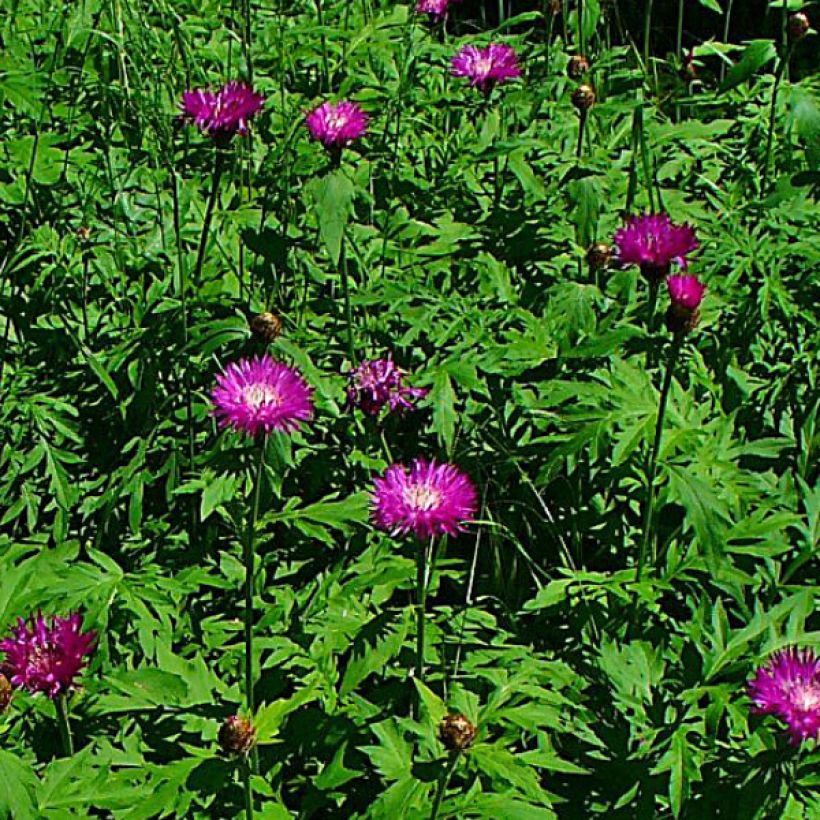

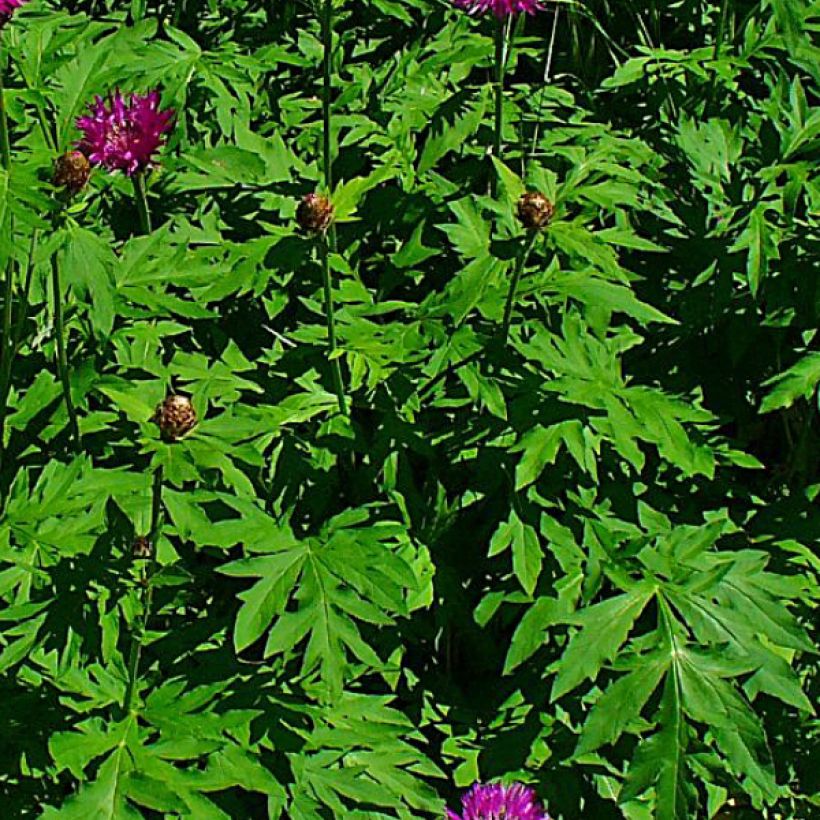

Flowering
Foliage
Plant habit
Botanical data
Centaurea
dealbata
Stenbeergii
Asteraceae
Mealy centaury, Persian cornflower, Whitewash cornflower
Central Europe
Other Centaurea
Planting and care
Centaurea dealbata 'Steenbergii' prefers regular, light, even poor, well-drained soil, as well as full sun. This plant thrives in moderately moist to moderately dry soil. It is very adaptable and tolerates short periods of drought and city pollution fairly well. Removing faded inflorescences will encourage the renewal of flowers. Robust and hardy, this plant will grow in most types of soil, in all regions. The plants can be pruned severely in summer to maintain a compact habit.
Planting period
Intended location
Care
-
, onOrder confirmed
Reply from on Promesse de fleurs
Summer flowering perennials
Haven't found what you were looking for?
Hardiness is the lowest winter temperature a plant can endure without suffering serious damage or even dying. However, hardiness is affected by location (a sheltered area, such as a patio), protection (winter cover) and soil type (hardiness is improved by well-drained soil).

Photo Sharing Terms & Conditions
In order to encourage gardeners to interact and share their experiences, Promesse de fleurs offers various media enabling content to be uploaded onto its Site - in particular via the ‘Photo sharing’ module.
The User agrees to refrain from:
- Posting any content that is illegal, prejudicial, insulting, racist, inciteful to hatred, revisionist, contrary to public decency, that infringes on privacy or on the privacy rights of third parties, in particular the publicity rights of persons and goods, intellectual property rights, or the right to privacy.
- Submitting content on behalf of a third party;
- Impersonate the identity of a third party and/or publish any personal information about a third party;
In general, the User undertakes to refrain from any unethical behaviour.
All Content (in particular text, comments, files, images, photos, videos, creative works, etc.), which may be subject to property or intellectual property rights, image or other private rights, shall remain the property of the User, subject to the limited rights granted by the terms of the licence granted by Promesse de fleurs as stated below. Users are at liberty to publish or not to publish such Content on the Site, notably via the ‘Photo Sharing’ facility, and accept that this Content shall be made public and freely accessible, notably on the Internet.
Users further acknowledge, undertake to have ,and guarantee that they hold all necessary rights and permissions to publish such material on the Site, in particular with regard to the legislation in force pertaining to any privacy, property, intellectual property, image, or contractual rights, or rights of any other nature. By publishing such Content on the Site, Users acknowledge accepting full liability as publishers of the Content within the meaning of the law, and grant Promesse de fleurs, free of charge, an inclusive, worldwide licence for the said Content for the entire duration of its publication, including all reproduction, representation, up/downloading, displaying, performing, transmission, and storage rights.
Users also grant permission for their name to be linked to the Content and accept that this link may not always be made available.
By engaging in posting material, Users consent to their Content becoming automatically accessible on the Internet, in particular on other sites and/or blogs and/or web pages of the Promesse de fleurs site, including in particular social pages and the Promesse de fleurs catalogue.
Users may secure the removal of entrusted content free of charge by issuing a simple request via our contact form.
The flowering period indicated on our website applies to countries and regions located in USDA zone 8 (France, the United Kingdom, Ireland, the Netherlands, etc.)
It will vary according to where you live:
- In zones 9 to 10 (Italy, Spain, Greece, etc.), flowering will occur about 2 to 4 weeks earlier.
- In zones 6 to 7 (Germany, Poland, Slovenia, and lower mountainous regions), flowering will be delayed by 2 to 3 weeks.
- In zone 5 (Central Europe, Scandinavia), blooming will be delayed by 3 to 5 weeks.
In temperate climates, pruning of spring-flowering shrubs (forsythia, spireas, etc.) should be done just after flowering.
Pruning of summer-flowering shrubs (Indian Lilac, Perovskia, etc.) can be done in winter or spring.
In cold regions as well as with frost-sensitive plants, avoid pruning too early when severe frosts may still occur.
The planting period indicated on our website applies to countries and regions located in USDA zone 8 (France, United Kingdom, Ireland, Netherlands).
It will vary according to where you live:
- In Mediterranean zones (Marseille, Madrid, Milan, etc.), autumn and winter are the best planting periods.
- In continental zones (Strasbourg, Munich, Vienna, etc.), delay planting by 2 to 3 weeks in spring and bring it forward by 2 to 4 weeks in autumn.
- In mountainous regions (the Alps, Pyrenees, Carpathians, etc.), it is best to plant in late spring (May-June) or late summer (August-September).
The harvesting period indicated on our website applies to countries and regions in USDA zone 8 (France, England, Ireland, the Netherlands).
In colder areas (Scandinavia, Poland, Austria...) fruit and vegetable harvests are likely to be delayed by 3-4 weeks.
In warmer areas (Italy, Spain, Greece, etc.), harvesting will probably take place earlier, depending on weather conditions.
The sowing periods indicated on our website apply to countries and regions within USDA Zone 8 (France, UK, Ireland, Netherlands).
In colder areas (Scandinavia, Poland, Austria...), delay any outdoor sowing by 3-4 weeks, or sow under glass.
In warmer climes (Italy, Spain, Greece, etc.), bring outdoor sowing forward by a few weeks.


































